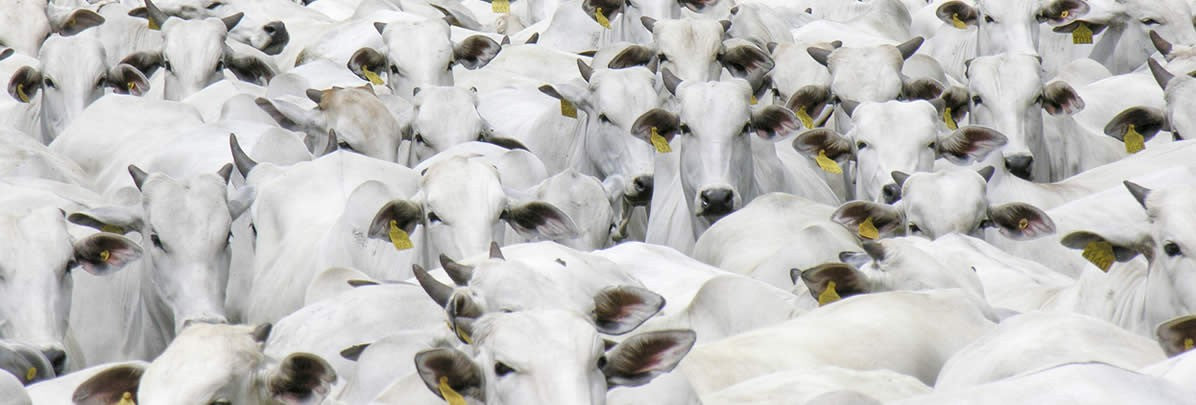
SERVICES
Food Efficiency - CAR
FOOD EFFICIENCY
The profitability of beef cattle production depends on the “inputs” and “outputs” of the system. Food supply is the highest cost input in most livestock enterprises (Arthur et al., 2004), especially in more intensive ones.
For beef cattle, most genetic improvement programs only emphasize selection to increase outputs, such as weights at different ages, daily weight gain, scrotal circumference, carcass characteristics and even reproductive performance (Lanna et al, 2004), without paying attention to the reduction in food costs. The relevance of increasing feed efficiency also expands as the area of pastures for cattle production and also the production of environmental pollutants such as manure and methane are reduced (Basarab, 2003), an issue of extreme importance when the focus becomes the sustainability of natural resources.
Feed efficiency is defined as the ratio between consumption and gain and is characterized as a crude measure that has limitations when used as a selection parameter as it is correlated with live weight (Arthur et al., 2001). This can lead to efficiency compromises in the breeding sector as a consequence of the increase in the adult weight of the herd. An alternative is the residual food consumption (CAR) parameter. Several studies have been carried out for some years in order to evaluate this efficiency measure. Its use in selection programs is justifiable mainly because it does not present the limitation of being correlated with the gain rate and live weight and, therefore, does not incur the problems described above.
The Food Efficiency Tests coordinated by Aval Serviços Tecnológicas are tests of individual performance in which animals are evaluated for food consumption, weight, weight gain and carcass quality, for at least 70 days, preceded by an adaptation period of at least 28 days. . With these records, residual food consumption, feed efficiency, and cost of the arroba produced are calculated. The objective is to define the genetic merit and cost of arroba produced from bulls and heifers through information on inputs/costs (diet, labor, diesel, machinery, etc.) and outputs/revenues (performance, carcass weight, etc.).
These characteristics have an economic value, therefore, they are relevant both for decision-making in the brand selection process and for adding value to the product to be sold. The animal to be sold will have a set of information, allowing the customer the opportunity to choose animals of greatest interest.
